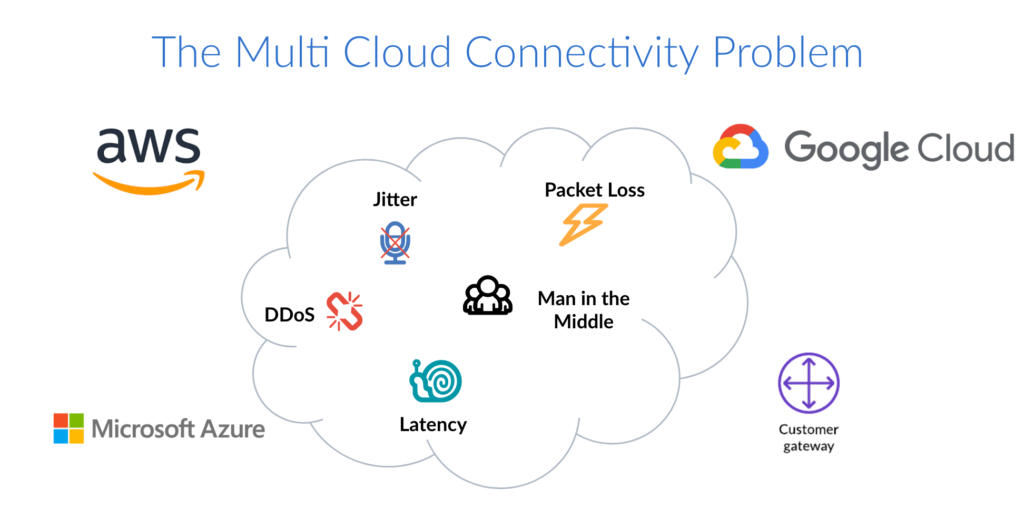Somewhere in the past year or so “Cloud Computing” experienced a cool graphic novel plot twist where all the superheroes discovered the multiverse.
If one cloud experience was good, certainly working with many was better! As firm believers in cloud and cloud based services, why would any enterprise be constrained to a single cloud? Why can’t IT be built out of a multiverse of clouds?

Industry analysis shows that many enterprises have reached this point in their cloud journey. They’re using multiple clouds. Their workflows are “spreading” physically across multiple providers. They are engaging more cloud partners. Whether to mitigate risk, comply with data storage regulations or access best-of-breed services, more and more enterprises are becoming hybrid cloud. Why not make it a full Productivity or ITaaS solution! What can we do to help make this transition happen faster? We have the Internet’s great realtime, on-demand, programmable network orchestration platform. Hmmm ….
Given the combination of private cloud instances, often in regional multi-tenant data centers, and public cloud services distributed across multiple public cloud partners, IS the cutting edge of enterprise cloud architecture; what can we do to enable and reach this goal? How can we make it better? How can we enable companies to get there more easily and basically turn-key?
Ok, here’s another conclusion when applying a networking lens. At a really high level, in this new architecture, all clouds are one cloud. There is no “one cloud to rule them all” but instead a realization that different apps and services need different deployment models. There are security and regulatory concerns, different public clouds have different pros/cons, and everyone needs flexibility to build what’s right for them.
The answer is embrace the multi-cloud multiverse!
PacketFabric believes physical and topologic distance should be all but irrelevant. That’s why we are introducing Flat Rate Pricing for Cloud Connectivity of 1G and below, and reducing our pricing for 5G and below. It’s not “get to the cloud” it’s “get to all the clouds!” Time to tune into the cloud multiverse and turn on!
There’s a third thing that’s been clawing at us for a while. For a number of reasons, the conceptual promise of all cloud access being local – a universal “edge” appearing in every major geographic region with a complete intersection of public and private cloud providers – isn’t a reality yet. We believe in this architecture and thought that we should make this happen, so we decided to make this a reality. We want our customers and partners to be able to build solutions with this new Internet Architecture. It’s why we built our network as a fabric and not the typical plate of spaghetti.
Fourth, in physical terms, the “presence” map of any enterprise’s cloud partners – the regions in which they provide private on-ramps to their services – doesn’t always overlap the enterprise’s own geographic centers of gravity. It’s not uncommon for an enterprise to have a point of presence that overlaps the provider in one region, but desire to connect to an additional “availability” zone furnished by that provider in a region where they have not built out the same overlapping presence to allow an easy interconnection. We are a next generation network with full redundancy of fiber, spectrum, hardware stack and a proper layered cloud first software architecture for our platform. This all leads us to really think we are onto something here.
Fifth, as innovation in cloud services accelerates, it’s likely that an enterprise will want to create workflows that involve transactions with a new cloud service partner that hasn’t yet built out an extensive presence map of their own. Therefore, until now, traffic that left the local market was always a higher cost item – creating significant friction for enterprises adopting a hybrid multi-cloud architecture. There was no fabric to the network, there were point to point circuits that take eons to provision. We fixed that.
Bottomline what we heard from our customers and partners is that; you want all your cloud resources to feel as if they are local (fast). You want your user and operations interactions to be consistent – regardless of geography (good). For more predictable performance and availability, you don’t want to transit the congested backbones of internet service providers for access. And you want them to be cost effective (cheap). Bam. Now there’s something we can bring to the market. No need to choose two between those goals.
PacketFabric is removing that friction. We are removing the exorbitant “long haul” transit fees for out-of-market cloud connections charged by legacy service providers. We are creating a “flat earth” for hosted cloud services ordered within the same region. Pay a flat rate for Hosted cloud connections up to 1Gbps in the United States, Europe, or Australia.
As long as you’re connecting to one of our cloud partners within any available region, we don’t charge additional fees for your cloud connections up to 1Gbps. For example, hosted cloud connectivity in the United States is $100 per month for up to 1Gbps, no matter if you’re connecting in the same city, or across the country.
And for higher rates, we are reducing pricing of 5G and below. Get to the cloud, get all your applications and services with bandwidth, latency and jitter guarantees, and build whatever hybrid architecture you need; just get there fast, reliably, and at low cost.
Whether you’re a new cloud provider that wants to expand into new markets or an enterprise that wants to make IT life less complicated and less expensive while embracing hybrid architecture, PacketFabric is redefining “expanding your reach”.
Good, Fast, or Cheap. Now you can pick all three with PacketFabric.
Dave Ward, CEO @ PacketFabric